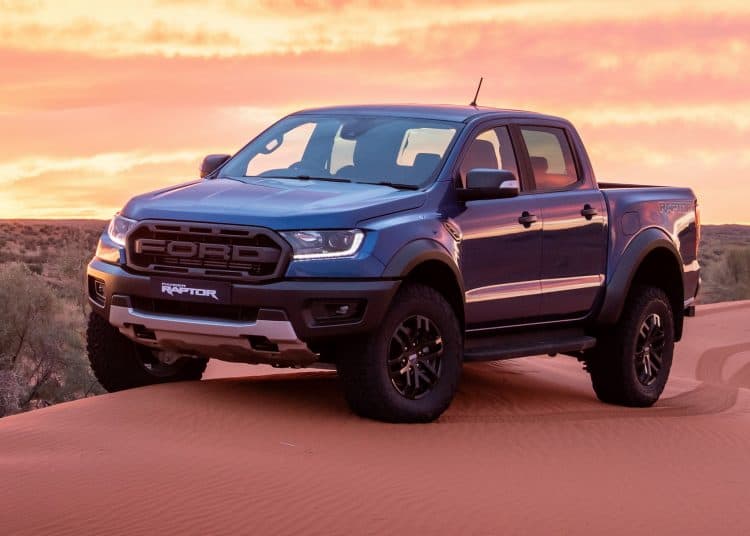
FMC SA
Ford has finally launched its keenly anticipated Ranger Raptor double-cab bakkie in South Africa. Claimed to set new standards in high-speed all-terrain driving ability, the Ranger features significant engineering upgrades to differentiate it from other Ranger double-cabs.
Although the 2-litre bi-turbodiesel engine and ten-speed gearbox are shared with other Rangers, the Raptor has significantly better off-road ability.
The brash styling is underscored by an overall increase in size, with these Raptor bakkies being 51mm taller than other Rangers and featuring a 150mm wider track. Ford traditionalists will notice that the company’s famous roundel badge has been removed from the Raptor’s nose, replaced by bold lettering that stretched the entire width of the front grille.
Beyond the purposeful styling, there are some very special components which gift the Raptor its unique off-road ability. The base statistics tally 283mm of ground clearance, an 850mm wading depth and 32.5-degree approach angle. Those numbers are all notable improvements on any conventional Ranger bakkie.
Racing shocks to tame any terrain
The Raptor’s most noteworthy upgrade concerns its suspension, where the rear axle is now supported by a Watts-link, borrowed from Ford’s Everest SUV, and all four wheels are suspended by custom dampers, supplied by Californian specialist, Fox racing. These larger shock absorbers are competition grade items, which don’t differ much from what off-road racing teams use each year at the gruelling Dakar rally raid in South America.
How much more capable is the Raptor than any Ranger bakkie? It has 32% greater wheel travel up front, and 22% more vertical axle movement at the rear. Those numbers mean you have a comfortable margin with which to roll over challenging terrain, at much higher speeds than any other bakkie.
To ensure drivers retain appropriate levels of control when using the Raptor’s increased performance, Ford has fitted 20% larger brake callipers and there is a 60% thicker underbody bashplate, to protect the engine in case of high-speed terrain strike.
Ford is marketing the Raptor at R786 400, which is only 15% more expensive than a new Ranger Wildtrak double-cab 4×4. Although they both share the same 157kW 2-litre bi-turbo engine, the Raptor’s off-road ability is simply in another automotive realm.
Help support journalists, the guardians of independent journalism, through our student media initiative that gives a voice to students and their generation! Find out more…











More Stories
BMW 1 Series larger and no longer rear-wheel drive
Opel makes adventurous Vanlife more attainable with Combo 4×4
GR Sport breaks the R700k price barrier for Hilux in South Africa